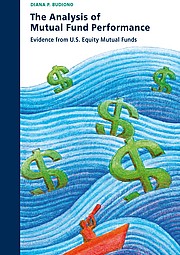The Analysis of Mutual Fund Performance: Evidence from U.S. Equity Mutual Funds Defended on Thursday, 4 February 2010
We study the mutual fund performance for about 45 years. There are several key points that we can withdraw from this dissertation. First, to study the persistence of mutual fund performance, it is important to consider time-varying exposures because when they are ignored, the persistence will be overestimated or underestimated. Second, the popular investment strategy in literature is to use only past performance to select mutual funds. We find that an investor can select superior funds by additionally using fund characteristics (fund turnover ratio and ability). Importantly, this strategy also requires less turnover, which is more appealing from the economic point of view. Third, the average alpha of mutual funds is an indication of whether it pays off to invest in actively managed funds. We show that a substantial part of the variation in the average alpha can be explained by the average expense ratio, the ratio between skilled and unskilled funds, and combining the average turnover ratio with the skill ratio and trading costs. The latter demonstrates that average turnover hurts the average funds performance due to there not being enough skilled funds. Fourth, selecting mutual funds on only alpha or a single style timing skill leads to overestimating the loading on the selected characteristic and a negative bias towards other characteristics. By estimating for each fund simultaneously alpha and style timing skills over its complete ex-ante available history based on daily returns we achieve two important results, namely the estimated alphas and style timing loadings of the top decile are estimated more accurately; and the ex-post performance of the top decile is superior to that of deciles selected on a subset of characteristics, using monthly data or a shorter estimation window.
Keywords
funds selection, fund characteristics, mutual fund, performance measure, persistence, risk-adjusted performance, time-varying exposures, style timing skill, stock selectivity skill












